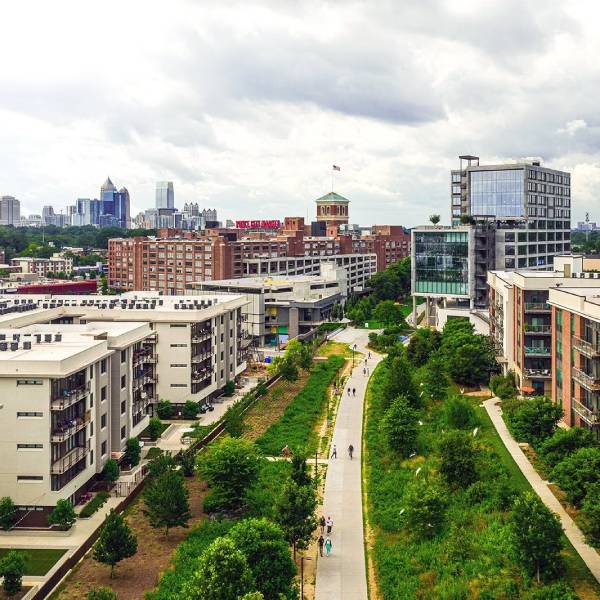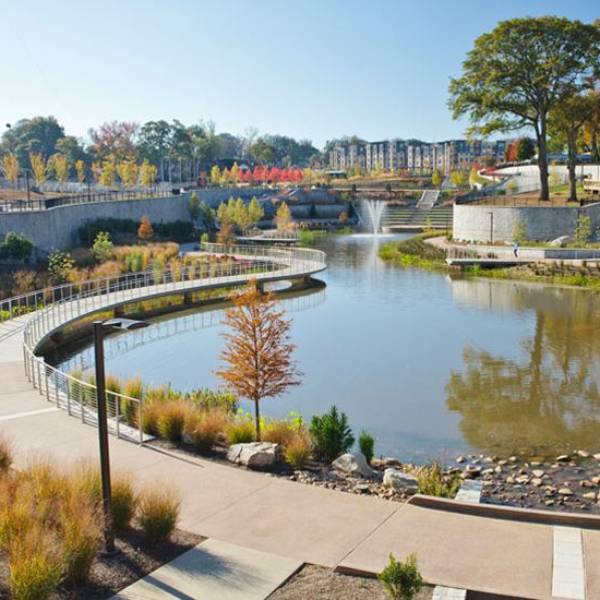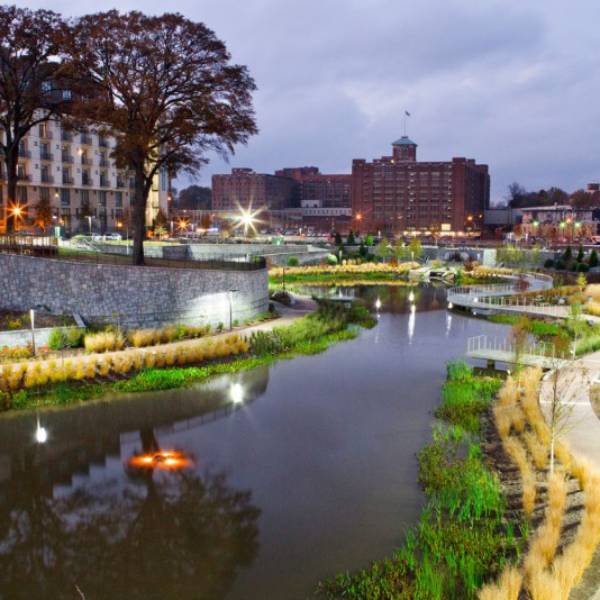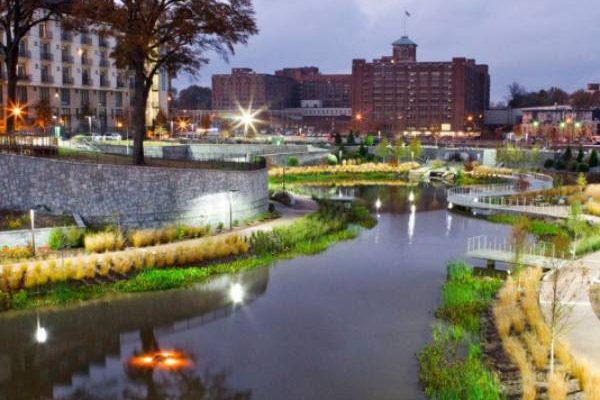Overview of the Atlanta BeltLine
The Evolution of the BeltLine
The Atlanta BeltLine represents a significant shift in urban planning approaches. Originally a neglected railway corridor, it has transformed into a dynamic space that revitalizes neighborhoods. People now enjoy walking, biking, and exploring historical sites along the loop.

Additionally, the BeltLine enhances connectivity between diverse communities, promoting social interaction and collaboration. Many festivals and events take place in the parks, enriching the cultural fabric of Atlanta. As the BeltLine continues to grow, it fosters increased economic opportunities and attracts new businesses. This transformation illustrates how collaborative efforts can reshape urban spaces for the better.
Community Impact and Sustainability
The BeltLine’s design prioritizes sustainability while promoting healthy lifestyles. It integrates green spaces, which provide essential habitats and improve air quality. Residents often gather in these areas, fostering a sense of community. Moreover, the BeltLine encourages public transportation use, reducing reliance on vehicles. This shift minimizes congestion and lessens environmental impact. The project also includes affordable housing initiatives to support diverse populations.
By balancing development with social responsibility, the BeltLine demonstrates a model for future urban revitalization efforts. Many cities now look to Atlanta for inspiration as they navigate similar goals. The BeltLine proves that urban redevelopment can harmonize nature, culture, and community values. Such initiatives create long-lasting effects on communities, making them more vibrant and inclusive spaces. As cities face growing challenges, the lessons from the BeltLine could guide them toward more sustainable futures.
History and Vision of the Atlanta BeltLine
The Birth of the Atlanta BeltLine
The idea for the Atlanta BeltLine started in the early 2000s. City planners recognized the potential of an abandoned rail corridor. They aimed to enhance connectivity and urban life rather than letting it decay. Additionally, they envisioned a transformed landscape that would encourage walking, biking, and social interaction.
Community members rallied behind the initiative, seeing opportunity in revitalization. As discussions progressed, key stakeholders joined the project, uniting to share a common vision. This collaboration marked a significant turning point, as it laid the groundwork for future development.
Transforming Urban Spaces
Today, the Atlanta BeltLine represents more than just a transportation project. It fosters cultural events, local art, and vibrant neighborhoods. Consequently, the area has become a hub for economic activity and social engagement. Businesses near the BeltLine flourish due to the increased foot traffic and visibility. Moreover, residents and visitors enjoy parks and green spaces that promote well-being and community.
As people walk or bike along the path, they build connections with their surroundings and each other. The ongoing improvements enhance not only mobility but also the overall quality of life in Atlanta. This evolution proves that innovative city planning can yield transformative results. Urban environments can become lively, inclusive spaces that reflect the needs of their communities. The success of the BeltLine encourages other cities to consider similar initiatives, fostering a new era of urban development. Through collaboration and vision, the Atlanta BeltLine continues to inspire positive change within the city.
The Atlanta BeltLine’s Impact on the Community

Connecting Communities
The BeltLine plays a vital role in linking diverse neighborhoods across Atlanta. It not only acts as a transit path but also encourages social interaction among residents. As more people engage with the BeltLine, it fosters a greater sense of community. Neighbors can meet each other while walking, jogging, or biking along the scenic route. This interaction strengthens local ties and promotes a greater understanding of cultural diversity. Additionally, the BeltLine enhances accessibility to various local attractions, making it easier for residents to enjoy city amenities.
Economic Growth and Vibrancy
The BeltLine catalyzes significant economic development in Atlanta. It attracts new businesses that thrive in the vibrant atmosphere, creating jobs and opportunities for locals. Entrepreneurs recognize the potential of the area and establish shops that reflect the community. Moreover, the rise in property values demonstrates the BeltLine’s positive influence on real estate.
Increased demand for housing leads to new residential constructions that accommodate growing populations. The creation of green spaces also contributes to this vibrancy, offering residents areas to relax and socialize. Beyond being a simple path, the BeltLine transforms Atlanta into a more livable and economically robust city. In turn, this enhances the overall quality of life for all its residents, making it a more appealing place to live and work.

The Role of Parks and Trails in the Atlanta BeltLine
A Breath of Fresh Air
The Atlanta BeltLine serves as a vital green space in a bustling city. Many residents find solace in its parks and trails. These areas create a sanctuary where people can escape the urban chaos. Furthermore, the BeltLine encourages a sense of community by hosting various events.
Outdoor fitness classes attract health enthusiasts while art installations showcase local talent. Both activities foster connections among participants and promote a shared appreciation for creativity. The diverse programming ensures there is something for everyone. Whether walking a dog or attending a concert, visitors feel welcome. The BeltLine thus becomes more than just a recreational area; it evolves into a community hub.
Accessibility and Inclusion
One of the BeltLine’s core principles focuses on inclusivity. The design of the parks emphasizes accessibility for all visitors, regardless of ability. Smooth pathways and well-placed amenities facilitate easy navigation throughout the network. Additionally, the BeltLine invites diverse audiences to participate in its offerings. Families, artists, and fitness lovers come together to enjoy the space. This collective experience enriches the sense of belonging among Atlanta’s residents.
Community-driven events empower individuals to take part in mindful activities. They craft memories that deepen ties within the neighborhood. Moreover, the focus on sustainability enhances the natural environment while promoting healthy lifestyles. The Atlanta BeltLine proves that urban spaces can harmoniously blend with nature. Ultimately, it stands as a testament to how thoughtful urban planning can improve quality of life.
The Economic Development of the Atlanta BeltLine
The BeltLine’s economic development strategy is focused on creating a more equitable and prosperous city. By attracting investment and encouraging the growth of local businesses, the project aims to generate jobs and stimulate economic activity. The BeltLine’s impact on Atlanta’s economy is multifaceted, including the revitalization of underutilized areas, the creation of new commercial spaces, and the enhancement of the city’s overall competitiveness. The BeltLine, often dubbed the “rainbow belt,” aims to foster economic equity and vibrancy through local business growth and community revitalization.
The Future of the Atlanta BeltLine
As the Atlanta Belt Line continues to expand and evolve, its future holds promise for further integration of transit, parks, and trails. The project’s long-term vision includes the completion of a streetcar loop, the development of additional green spaces, and the continued enhancement of the city’s cultural and economic fabric. The BeltLine’s ongoing development is a dynamic process, with new segments and features being added regularly, ensuring that Atlanta remains at the forefront of urban innovation. The Atlanta BeltLine’s expansion not only enhances urban life but also fosters community initiatives, like the Women’s Black Belt program, promoting empowerment through engagement in the arts and nature.
Conclusion: The Atlanta BeltLine’s Legacy
The Atlanta Belt Line is more than just a trail system; it’s a living legacy that reflects Atlanta’s commitment to sustainable urban development. As the project continues to unfold, it stands as a beacon of progress, a symbol of community, and a testament to the power of visionary urban planning. The Atlanta BeltLine is a model for cities worldwide, demonstrating how innovative urban projects can transform communities and shape the future of urban living. While the Atlanta BeltLine symbolizes community progress, finding the best men’s belt can also elevate personal style within that thriving urban landscape.
Additional Resources
For more information on the Atlanta BeltLine, including updates on trail development, events, and community initiatives, visit the official Atlanta BeltLine website. To explore the BeltLine’s art scene, check out Art on the Atlanta BeltLine. For a detailed look at the BeltLine’s economic impact, refer to the Atlanta BeltLine Economic Development page.
